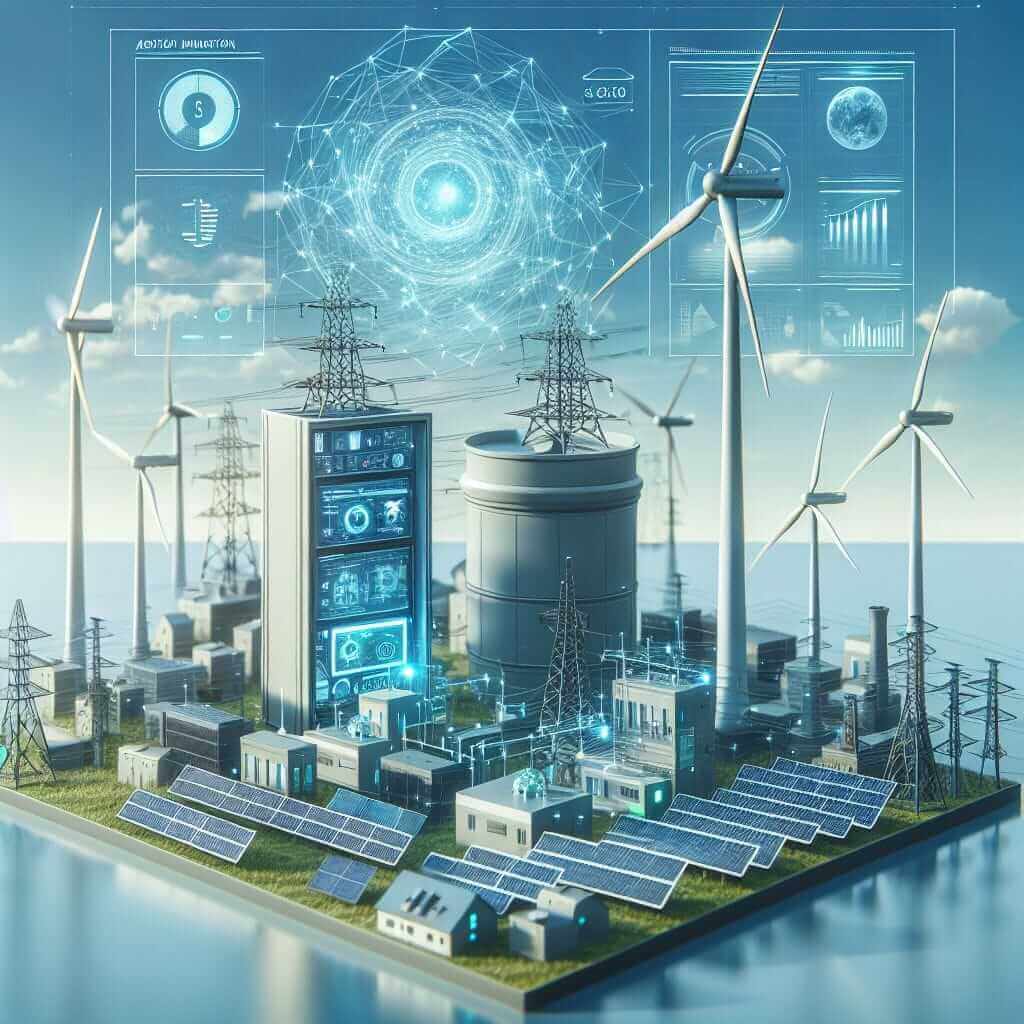The IELTS Reading section often includes passages related to current global issues, including topics on technology and environment. One increasingly prevalent topic is “How is renewable energy transforming power grids?” This topic is not only relevant due to the global shift towards sustainable energy but also aligns with the academic and scientific nature of IELTS reading passages. Understanding this subject and practicing related reading passages can greatly benefit test-takers.
Main Content
Practice Reading Passage: Medium Text
Title: The Impact of Renewable Energy on Modern Power Grids
In recent years, the surge in renewable energy sources, such as solar and wind power, has significantly transformed power grids worldwide. Traditional power grids were originally designed to distribute electricity generated from consistent and controllable sources like coal, natural gas, and nuclear power plants. However, integrating renewable energy introduces several challenges and opportunities.
Renewable energy sources are inherently intermittent; solar power is generated only during daylight hours, and wind power is contingent on weather conditions. This variability necessitates advancements in grid management and energy storage technologies.
One of the key solutions to managing the intermittent nature of renewable energy is the development and implementation of smart grids. Unlike traditional power grids, smart grids utilize digital technology to monitor and manage the flow of electricity in a dynamic and efficient manner. These grids can quickly adapt to fluctuations in energy supply and demand, ensuring a stable and reliable electricity supply even when renewable energy generation is at its peak.
Energy storage systems, particularly batteries, play a crucial role in this transformation. Large-scale batteries can store excess energy generated during periods of high production and release it during periods of low production. This capability helps to balance supply and demand, reducing the need for fossil fuel-based backup power plants.
Moreover, the decentralized nature of renewable energy production has led to the concept of microgrids. Microgrids are localized grids that can operate independently or in conjunction with the main grid. They enhance energy security and reliability, particularly in remote areas or during emergency situations, by utilizing local renewable energy sources.
The rise of renewable energy also has socioeconomic implications. It can lead to job creation in the renewable energy sector, reduce dependency on imported fuels, and lower greenhouse gas emissions, contributing to global climate change mitigation efforts.
In summary, the integration of renewable energy is reshaping power grids, necessitating advanced technologies and new approaches to energy management. As the world continues to prioritize sustainability, the evolution of power grids towards incorporating renewable energy is poised to accelerate.
Questions
1. Multiple Choice
-
Why were traditional power grids initially designed?
a) To distribute renewable energy sources.
b) To distribute electricity from stable energy sources.
c) To handle the variability of renewable energy.
d) To manage localized electricity supply. -
What is one of the main challenges with renewable energy sources?
a) They are expensive to implement.
b) They require large areas for installation.
c) They have variable production rates.
d) They produce high levels of emissions.
2. True/False/Not Given
- Smart grids are a crucial development for the integration of renewable energy. (True/False/Not Given)
- Energy storage systems are exclusively used for storing wind energy. (True/False/Not Given)
3. Summary Completion
Complete the summary using NO MORE THAN TWO WORDS from the passage.
The use of (1) and (2) grids helps manage the variability of renewable energy production, ensuring stable and reliable electricity supply.
Answer Keys
1. Multiple Choice
- b) To distribute electricity from stable energy sources.
- c) They have variable production rates.
2. True/False/Not Given
- True
- False
3. Summary Completion
- smart
- micro
Common Mistakes
- Misreading Information: Always read the questions carefully. Understand whether the question asks for the writer’s opinion or factual information from the passage.
- Time Management: Allocate your time wisely. Spend about 20 minutes per passage in the reading section.
- Vocabulary Confusion: Pay attention to keywords and synonyms in the passage and questions to avoid misunderstandings.
Vocabulary
-
Intermittent (adj): Spasmodic, occurring at irregular intervals.
- /ˌɪn.təˈmɪt.ənt/
- Meaning: Happening occasionally rather than continuously.
-
Decentralized (adj): Diffused, distributed away from a centralized location.
- /ˌdiːˈsɛn.trə.lɑɪzd/
- Meaning: Different parts are managed or directed from various locations.
Grammar Point
Relative Clauses: Used to provide additional information about a noun without starting a new sentence.
- Example: “Renewable energy sources that are inherently intermittent require specific management.”
Tip: Use relative clauses to combine sentences and provide more information concisely.
Conclusion
Practicing with passages on contemporary and significant topics like renewable energy not only prepares you for the type of content you might encounter in the IELTS but also enhances your understanding of important global issues. Remember to read widely, manage your time effectively, and continuously expand your vocabulary and grammatical skills. Best of luck with your IELTS preparation!

Additional Advice
Regular practice with authentic reading materials and staying updated with global technological and environmental trends can significantly boost your performance in the IELTS reading section. Embrace each practice opportunity as a step towards achieving a high score.